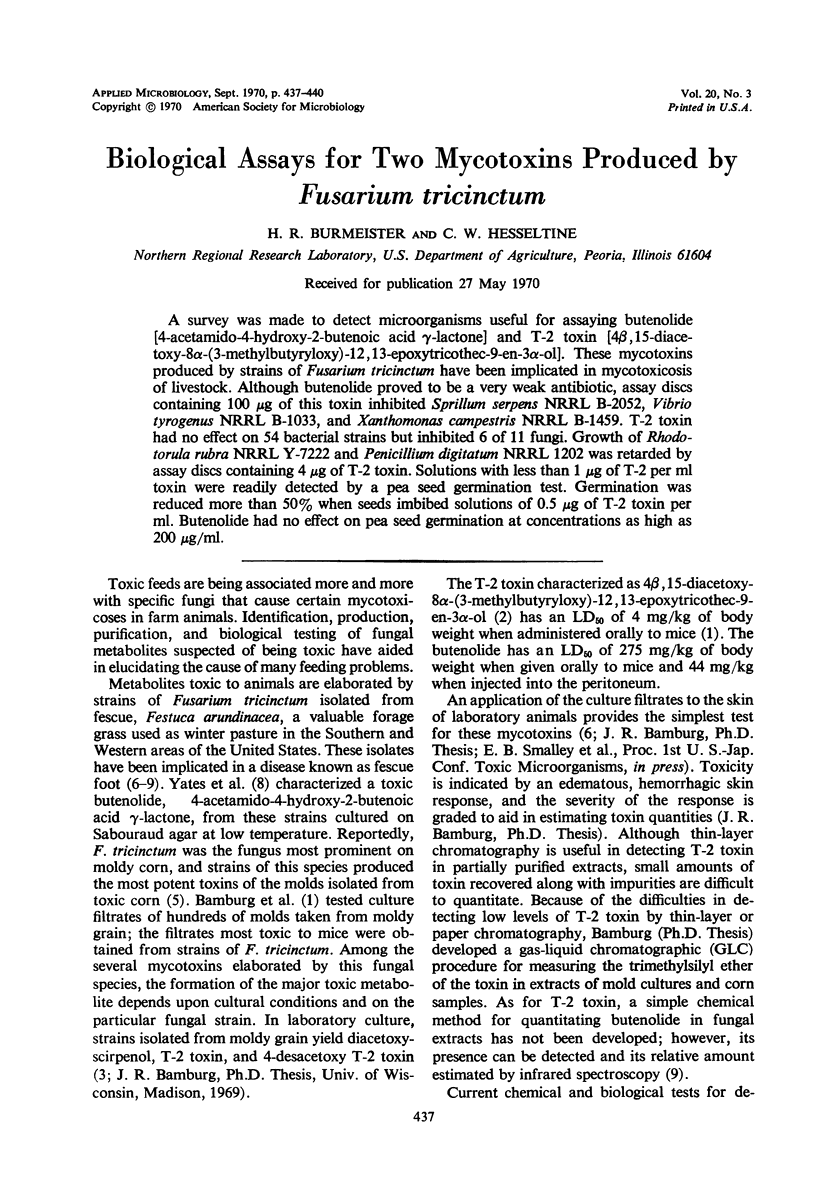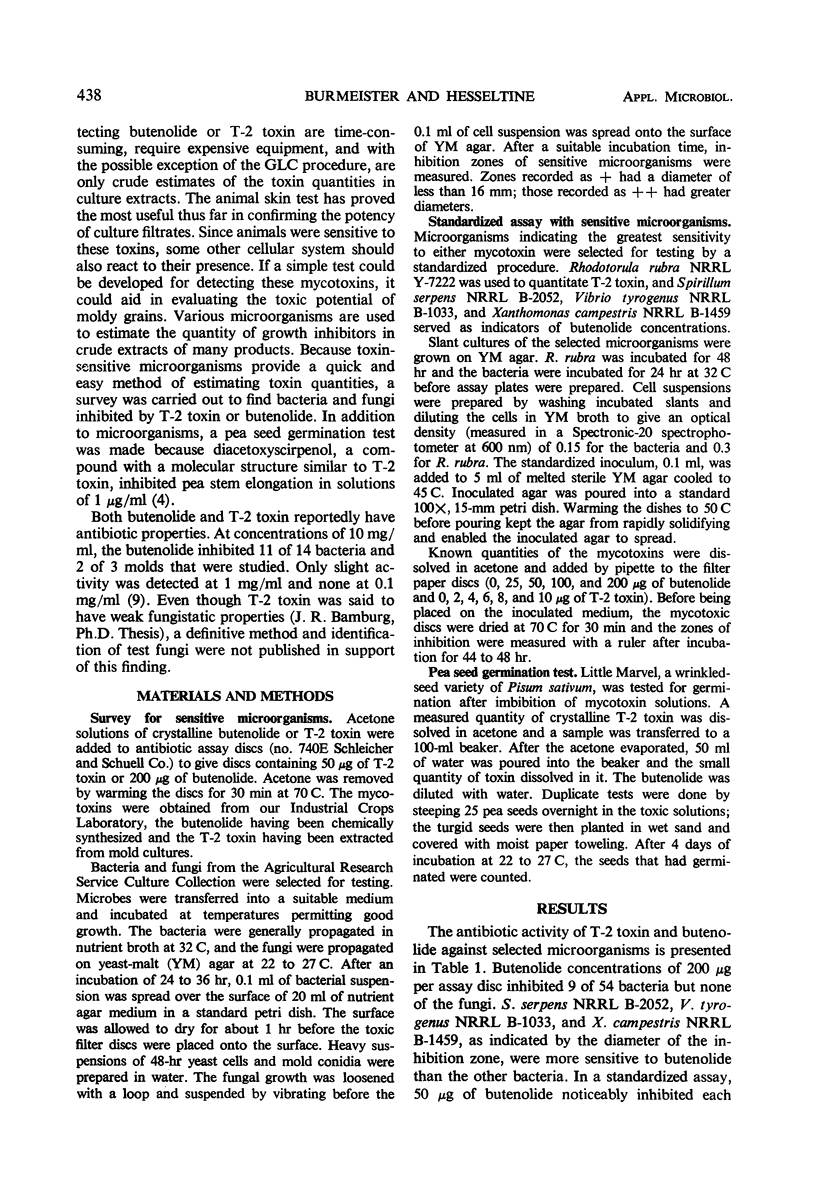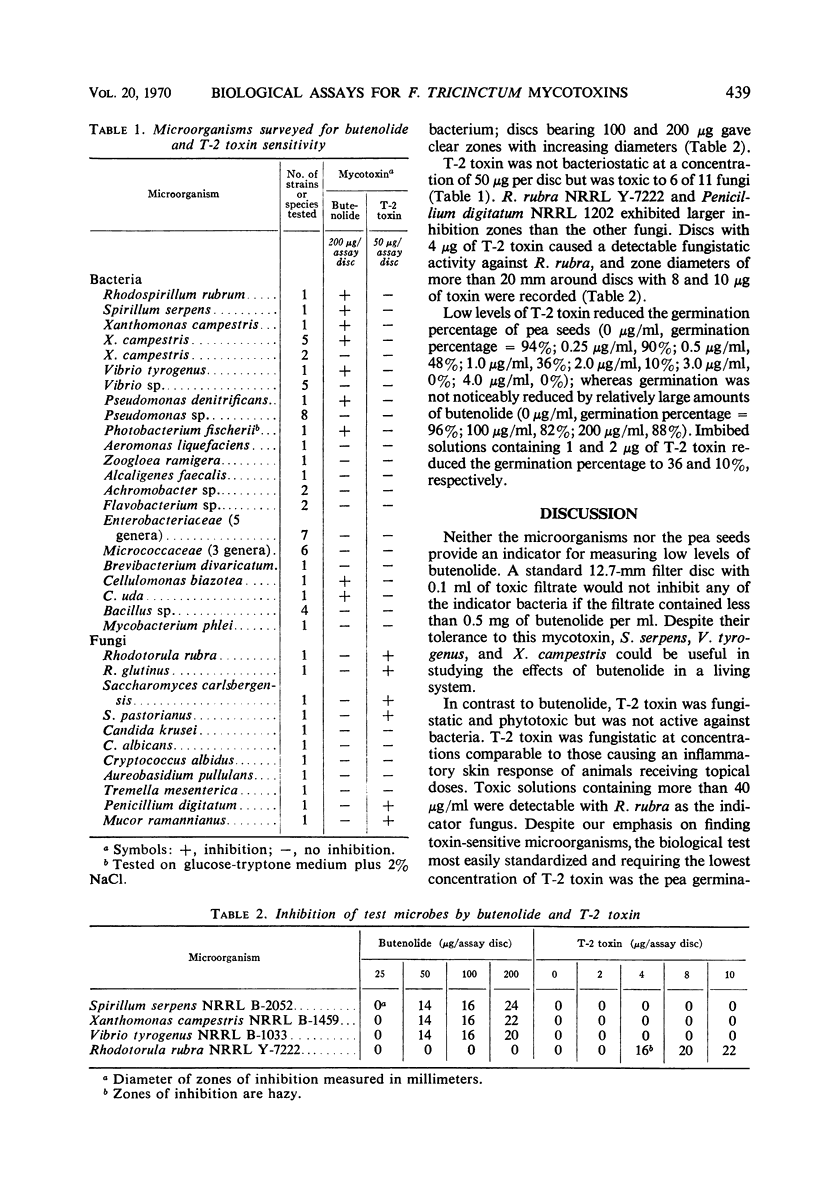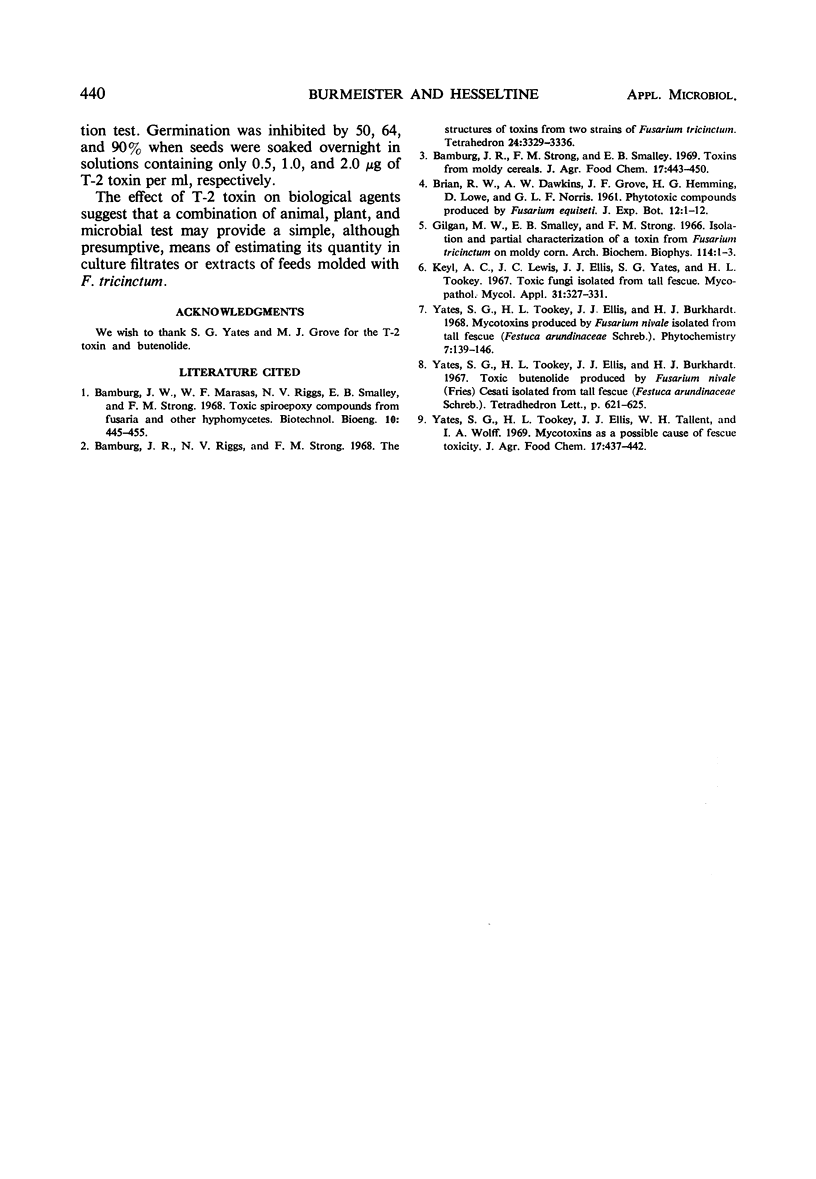Abstract
A survey was made to detect microorganisms useful for assaying butenolide [4-acetamido-4-hydroxy-2-butenoic acid γ-lactone] and T-2 toxin [4β, 15-diacetoxy-8α-(3-methylbutyryloxy)-12,13-epoxytricothec -9-en-3α-ol]. These mycotoxins produced by strains of Fusarium tricinctum have been implicated in mycotoxicosis of livestock. Although butenolide proved to be a very weak antibiotic, assay discs containing 100 μg of this toxin inhibited Sprillum serpens NRRL B-2052, Vibrio tyrogenus NRRL B-1033, and Xanthomonas campestris NRRL B-1459. T-2 toxin had no effect on 54 bacterial strains but inhibited 6 of 11 fungi. Growth of Rhodotorula rubra NRRL Y-7222 and Penicillium digitatum NRRL 1202 was retarded by assay discs containing 4 μg of T-2 toxin. Solutions with less than 1 μg of T-2 per ml toxin were readily detected by a pea seed germination test. Germination was reduced more than 50% when seeds imbibed solutions of 0.5 μg of T-2 toxin per ml. Butenolide had no effect on pea seed germination at concentrations as high as 200 μg/ml.
Full text
PDF



Selected References
These references are in PubMed. This may not be the complete list of references from this article.
- Bamburg J. R., Riggs N. V., Strong F. M. The structures of toxins from two strains of Fusarium tricinctum. Tetrahedron. 1968 Apr;24(8):3329–3336. doi: 10.1016/s0040-4020(01)92631-6. [DOI] [PubMed] [Google Scholar]
- Gilgan M. W., Smalley E. B., Strong F. M. Isolation and partial characterization of a toxin from Fusarium tricinctum on moldy corn. Arch Biochem Biophys. 1966 Apr;114(1):1–3. doi: 10.1016/0003-9861(66)90297-9. [DOI] [PubMed] [Google Scholar]
- Keyl A. C., Lewis J. C., Ellis J. J., Yates S. G., Tookey H. L. Toxic fungi isolated from tall fescue. Mycopathol Mycol Appl. 1967 Apr 28;31(3):327–331. doi: 10.1007/BF02053433. [DOI] [PubMed] [Google Scholar]


